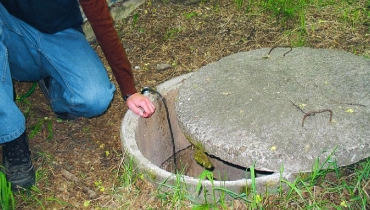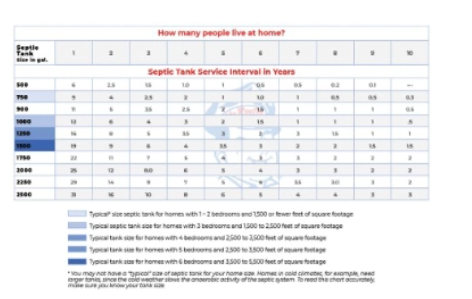
In an ideal world, your septic tank runs smoothly without any issues, staying out of sight and out of mind. Most of the time, that’s exactly how things work.
However, because septic tanks are out of view, it’s easy to forget about them! Neglecting maintenance, such as septic tank pumping, can lead to problems. Regular septic tank pumping is essential to their effective operation.
If you need your septic tank pumped, call the experts at Mr. Rooter Plumbing®. Maintenance and pumping from professionals will help you avoid smelly and expensive septic tank or drain field repairs. Septic tanks can last decades and provide reliable sewage treatment if they are regularly pumped.
How Often Should a Septic Tank Be Pumped?
How often to pump a septic tank depends on several variables. The size of your family, tank size, whether you have a garburator, and climate are a few factors that will influence the service interval. Use the chart below to learn how often you should have your septic tank pumped.
Septic Tank Pump Chart
This chart can help you find the correct service interval for pumping septic tanks. Remember: This chart is a guide and not a failsafe. Some provinces, cities, or towns may have minimum septic tank requirements regardless of your home size.

What Variables Affect Septic Tank Service Intervals?
The service intervals above are recommendations, not hard and fast rules. Many variables affect how often you should pump your septic tank, such as:
- How often you run your garburator
- Running a business out of your house
- Frequent disposal of coffee grounds or other non-septic-friendly materials in the drain
- Hosting events at your home
- Having a sewage ejector pump connected to your septic system
- Using a water softener connected to the septic tank
- Doing more laundry than the average person or family
How Do I Know My Septic Tank is Full?
Hopefully, you know your septic tank is getting full before your yard is flooded with sewage. If you notice the drains in your home backing up, this is a good indicator the septic tank needs to be pumped.
Foul smells, sewage odours, or standing water outside your home can also indicate septic tank failure. Clogged pipes or sewer blockages can sometimes be septic tank problems but may also have other causes. It’s best to get a professional diagnosis if you’re experiencing any of these issues.
If none of these symptoms are present, locate your septic tank access port. Put on gloves, protective clothing, and eyewear for safety, and then insert a 15 - 25 cm wooden rod vertically into the septic tank. If the sludge is over one-third full, it’s time for a septic tank pump!
Septic Tank Maintenance
You’re doing your septic tank a great justice by prioritizing septic tank pump outs with trusted service professionals. However, that doesn’t mean you can’t perform maintenance around those scheduled services. You can take care of your septic tank by taking the following actions:
- Avoid flushing non-biodegradable items
- Limit chemical use (e.g., bleach, pesticides, and drain cleaners)
- Be careful with garburator use (avoid grease, oil, and large food scraps)
- Monitor water usage
- Keep records of when to pump your septic tank
- Look for signs of trouble and act fast
Get Your Septic Tank Pumped by Mr. Rooter Plumbing®
Septic tank pumping is not your typical DIY project; it requires the help of a professional. Contact the trusted team at Mr. Rooter Plumbing® to provide a quality septic tank pump service. Just call or request an appointment online with our service professionals.
If you want to help cut down the required service time, you can locate the septic tank access port and dig it out if it’s buried. Sometimes, this can be a treasure hunt!

